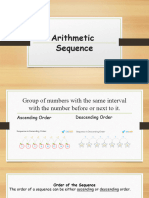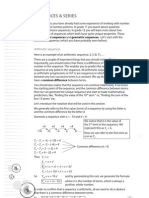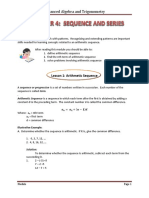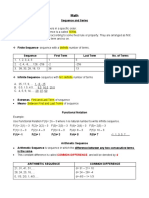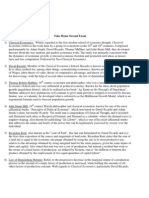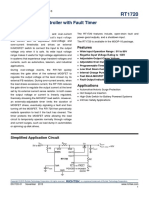0% found this document useful (0 votes)
14 views8 pagesArithmetic Sequence
The document explains arithmetic sequences, characterized by a constant difference between consecutive terms, known as the common difference. It provides examples of determining the common difference and finding specific terms in an arithmetic sequence using the formula for the nth term. Additionally, it discusses arithmetic means and partial sums of an arithmetic sequence.
Uploaded by
calyxpangalilingan15Copyright
© © All Rights Reserved
We take content rights seriously. If you suspect this is your content, claim it here.
Available Formats
Download as PDF, TXT or read online on Scribd
0% found this document useful (0 votes)
14 views8 pagesArithmetic Sequence
The document explains arithmetic sequences, characterized by a constant difference between consecutive terms, known as the common difference. It provides examples of determining the common difference and finding specific terms in an arithmetic sequence using the formula for the nth term. Additionally, it discusses arithmetic means and partial sums of an arithmetic sequence.
Uploaded by
calyxpangalilingan15Copyright
© © All Rights Reserved
We take content rights seriously. If you suspect this is your content, claim it here.
Available Formats
Download as PDF, TXT or read online on Scribd
/ 8







